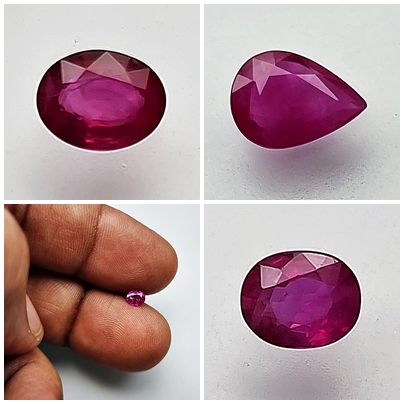
Burmese Ruby: Information
Something of the history of ruby from the Mogok Stone Tract of Myanmar is described in the works cited at the beginning of the chapter. At this distance in time and without translations of major works in the vernacular the authors recommend the cited works. Readers may consult the previous editions of Gems (Webster, 1962–94) though the sources of his material are not given. The most famous locality for fine rubies and sapphires is the district around Mogok in upper Myanmar. The Mogok Stone Tract is an area of some 1000 km2. The dates of discovery are not known and the legends later associated with ruby finds can be discounted. The area produces a fine ruby and blue sapphire.
The Burmese Ruby Mines Company
After the annexation of upper Burma by the British in 1886 (see A.T.Q. Stewart, The Pagoda War, London, Faber, 1972; ISBN 0571087221), Edwin Streeter, the London Bond St jeweller, obtained a concession to work the ruby mines though his position was disputed. On regularization of the position and flotation of the Burmese Ruby Mines Company (with over-subscription) mining was able to begin. As so often seems the case when a new gem mining venture actually begins work and miners look at the terrain without the assistance of rose-colored spectacles, extraction of the rubies was far from easy. The alluvial deposits in which the ruby crystals were contained lay under the Mogok settlement or beneath waterlogged valleys. Nonetheless in time mining was able to commence. No underground mining was involved. Up to 1908 the Company was able to pay a dividend but depression in the US and the availability of cheap Verneuil synthetic rubies caused a price fall, affecting even the finest specimens. The Bombay market (where most lower-grade rubies were sold) suffered at least an equally drastic fall in activity. The First World War occupied attention from 1914 to 1918 and in 1925 the Company went into voluntary liquidation, surrendering its lease to the government.
Reasons for the Company’s Failure
Many have speculated about the reasons for the Company’s failure, most concluding that it was unavoidable, the difficulties being too great to surmount. But recent evidence uncovered by Richard Hughes suggests that the Company owed its failure less to the difficulty of the task and more to greed. In a confidential report written in 1925, the head of the Geological Survey of India, J. Coggin Brown, pointed the finger for the Company’s failure straight at the De Beers diamond cartel. He stated: “at this juncture I cannot refrain from writing an opinion which I have already expressed verbally, that the influence of the De Beers diamond concern has had more to do with the present [1927] position of mining for colored gems in Burma than appears on the surface.
The reasons for this are obvious, and it is significant that there has always been a powerful representative of the great South African concern on the Board of the Burma Ruby Mines, Limited.” Brown went on to chronicle a number of bad decisions taken by the Board that resulted in missed opportunities. The report of 1927 is entitled Gem Mining in the Mogok Stone Tract of Upper Burma from the Annexation to the Present Time with some Suggestions for Future Operations. It was published by the Superintendent of Government Printing and Stationary, Burma and marked ‘Confidential’. At the time of this writing the company’s equipment has lain fallow for over 60 years.
Native Mining
After the failure of the Company, mining in Burma reverted to native methods. Mining was allowed on payment of a monthly fee, which was higher if water and explosives were used. To obtain a mining license in Burma, it was then necessary for one’s name to be on arbitrary list of registered miners, but those on the list were often willing to lend their names to the less fortunate for a consideration.
Pit Mining
In the dry season a shaft (twinlon) is sunk to the gem-bearing alluvial gravel (byon). On reaching it tunnels are driven as necessary. Wet conditions force miners to construct a timbered shaft (lebin).
Hillside Mining
The mining method called hmyawdwin involves the cutting of holes into hillsides and is resorted to when wet conditions make pit mining too dangerous. Caverns (loodwin, loo) may be encountered and their contents are washed out. Fine specimens are often retrieved by this method of working. Dredging streams tends to produce less fine material.
Mode of Occurrence
When ruby is found in situ the host rock will be silica-deficient and most commonly a marble. This is the common mode of occurrence of ruby from Myanmar and Afghanistan. At Mogok ruby occurs in a metamorphosed limestone, traces of which provide calcite and apatite inclusions in the host crystals. Sapphire from Myanmar is not apparently found in the marble and may have originated in syenites or in pegmatites though specimens are recovered from alluvial deposits as mentioned earlier. Ruby has been found at other localities in Myanmar including the Sagyin Hills near Mandalay and Namseka, near Mainglon. The notable purple-cored rubies from Mong Hsu, 250 km east of Mandalay, are heavily fractured and the purple color needs to be removed by heat treatment. The deposit was discovered in 1992.




